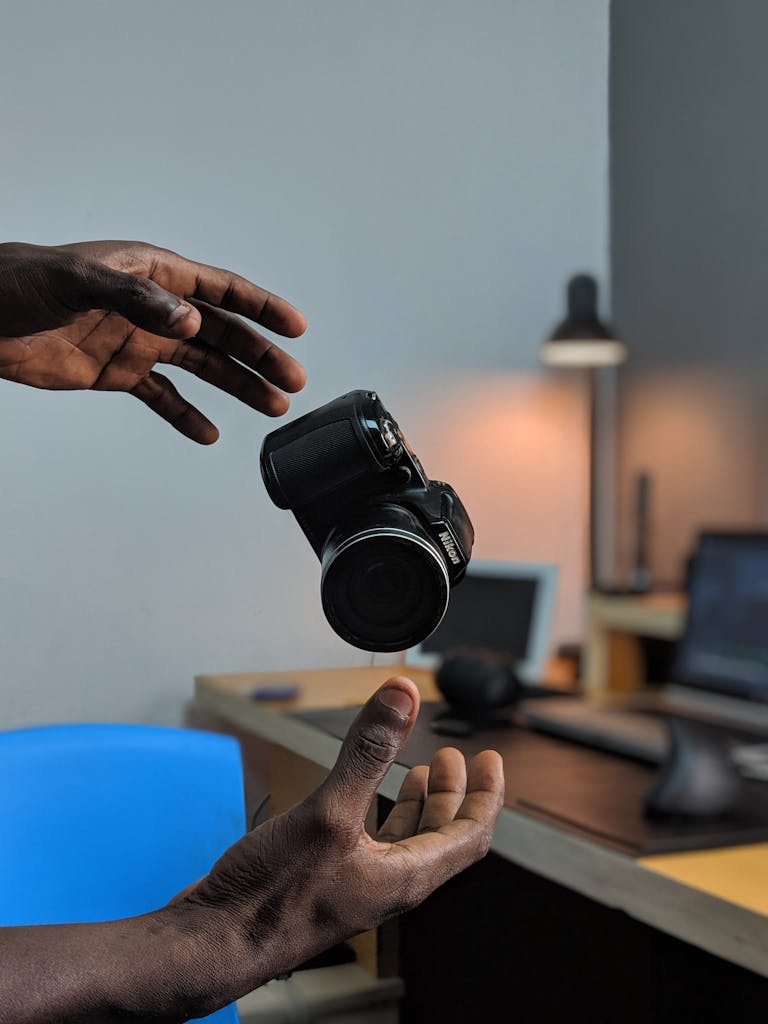Technology Restrictions and Able Inconveniences

Technology restrictions in the name of academic integrity, and digital choices that favour the convenience of the many over the inaccessibility of the few, leave visceral imprints on learners with disabilities. To get a sense of what these experiences look like, sound like, and feel like, the following short excerpts have been curated from works by authors Eli Clare and Joanne Weber.
As you read, try to avoid drawing conclusions. Instead, try just being with the discomfort and visceral experiences of disablement these authors have to share with us.
Disabling pain in assessment.
Educators might not realize that technology restrictions, such as restricting learners from using computers or phones in class or during exams, creates a digital accessibility hurdle for learners who use digital devices to equitably perceive information and demonstrate knowledge.
Author Eli Clare has cerebral palsy (CP). In Exile and Pride, he compares the experience of trying to complete a timed, handwritten test in class, without access to a computer, to the experience of being unable to summit a mountain he’d begun to climb.
Disability in the test: “The faster I try to write, the more my pen slides out of control, muscles spasm, then contract trying to stop the tremors, my shoulder and upper arm growing painfully tight…”
Impairment on the mountain: “I lurched along from one rock to the next, catching myself repeatedly as I start to fall, quads quickly sore from exertion, tension, lack of momentum.”
“These physical experiences, one caused by social construction [being disabled by the technology restriction], the other by bodily limitation [being impaired since birth], translate directly into frustration, making me want to crumple the test I can’t finish, hurl the rocks I can’t climb. This frustration knows no theoretical divide between disability and impairment. Neither does disappointment or embarrassment.”
Clare, E. (2015). Exile & pride: Disability, queerness, and liberation. p. 7-8

Reflection
Pause for a moment to be with Clare’s words: spasm, out of control, painfully tight, exertion, tension, lack of momentum, disappointment, embarrassment.
What technology restrictions have been normalized in your program?
What learning objectives do they serve?
Do they create inequitable, painful, disappointing or embarrassing learning or assessment conditions?

A Deaf Learner and Educator Experiences Being Unheard.
Most educators know it’s good to speak slowly and clearly in class, to remind learners to avoid speaking over top of one another and to configure the class so learners can see each other when they speak. But knowing and doing are two separate things.
Joanne Weber, a self-described deaf author and educator, delves into the complexities of communication by launching readers into other possible worlds, through her poetry and research. In her PhD dissertation, Weber explores, among other things, experiences of disablement in the academy and her own complex relationships with technology.
As you read, this first passage is a straightforward description of the work she puts into participating in teaching and learning environments with the hearing community. You might be surprized by her colleagues.
I must negotiate meaning through adjusting lighting, sightlines, guessing at what is being said, asking for repetition of information (if the speaker exhibits above average patience), demonstrating understanding or not, switching my hearing aid on and off when in noisy environments, and asking for American Sign Language interpreting. The demands of listening and the energy required to patch together broken sounds, words and phrases in the English language often exceed my capacity…
At the same time, some hearing colleagues have expressed dismay and impatience at having to accommodate me by wearing a microphone attached to an additional listening device (FM system) which augments my ability to hear. Furthermore, I am often thrust in environments where everyone is speaking at the same time despite my persistent efforts to remind them not to.
Weber, J. (2021). Cyborgs and Fox Wives:Interrogating Sign Language Ideologies and Moving Toward Survival, Resistance and Resilience. Canadian Journal of Disability Studies, 10.1. para 11
Weber first describes some of the invisible things she and many D/deaf and hard of hearing learners do to participate in class discussions or meetings. When necessary, she says she will ask for an ASL interpreter, or she asks people to repeat themselves. Those are two highly visible actions that some learners will be more or less comfortable taking in class.

Next Weber identifies one technology solution that would ease her auditory strain, microphones. We are left to wonder, what about using wireless microphones made her colleagues feel dismayed or impatient?
Reading Weber’s work, I felt dismayed and impatient for the 10% of Canadians who are estimated to a have some degree of hearing loss and who find themselves regularly straining and to some degree disabled because we have yet to normalize accessibility practices in learning environments. Why not?
Finally, as you read these four short, raw, lines from Weber’s The Pear Orchard, can you let her words take you into her experience of strain? Into a space of unknowing?
You could point, mime, gesture?
dance, or scribble a few words on a notepad.
Whatever I get from that
will be good enough, won’t it?Weber, J. (2007). The Pear Orchard. Hagios Press. (p. 82).
Reflection
Pause for a moment to reflect on the strain Webber describes: adjusting the light, her hearing aid, her sight line, guessing, asking for repetition…mime, gesture, dance, scribble.
How physically and cognitively exhausting would it be for a learner to sustain this level of strain for a 2 hours class?
What do you know about the technology that helps D/deaf and hard of hearing learners perceive lectures and course materials?
What shifts could you make to your digital praxis to make participating in class less straining and more equitable for D/deaf and hard of hearing learners?
What hurdles might block your path?
What would make this work more accessible to you?
There are a number of technologies and accessibility practices that can significantly reduce the strain on D/deaf and hard of hearing learners:
- Use microphones in bricks and mortar environments and online environments
- Enable closed captions without being asked in a Zoom-type environments.
- In bricks and mortar environments learners might use free tools like Otter.ai, which create live transcripts based on recordings taken on the learners’ personal device.
- Have a technology policy that allows learners to use devices in class without having to disclose a disability. This kind of policy gives learners the autonomy to choose and use technology to perceive what’s going on and engage more fully in class.
- Model inclusive communication, remind people to speak one at a time and repeat comments and questions if someone without a microphone speaks.
- Many of the digital accessibility practices that support D/deaf learners in online learning environments, also support learners in face to face classrooms. This video about accessible video conferencing, made by people with disabilities, provides an overview of accessible digital practices.
Further Reading
Related Experiences in the Literature
•Keast, Q. (2020, October 26). I’m deaf, and this is what happens when I get on a Zoom call. Fast Company.
•Seita, M., Andrew, S., & Huenerfauth, M. (2021). Deaf and hard-of-hearing users’ preferences for hearing speakers’ behavior during technology-mediated in-person and remote conversations. Proceedings of the 18th International Web for All Conference, 1–12.
Personal Essays That Touch on Disablement in Education
Leduc, A. (2020). Disfigured: On Fairy Tales, Disability, and Making Space | Canada Commons. Coast House Books
Wong, A. (Ed.). (2020). Disability visibility : first-person stories from the Twenty-first century. Vintage Books, a division of Penguin Random House


